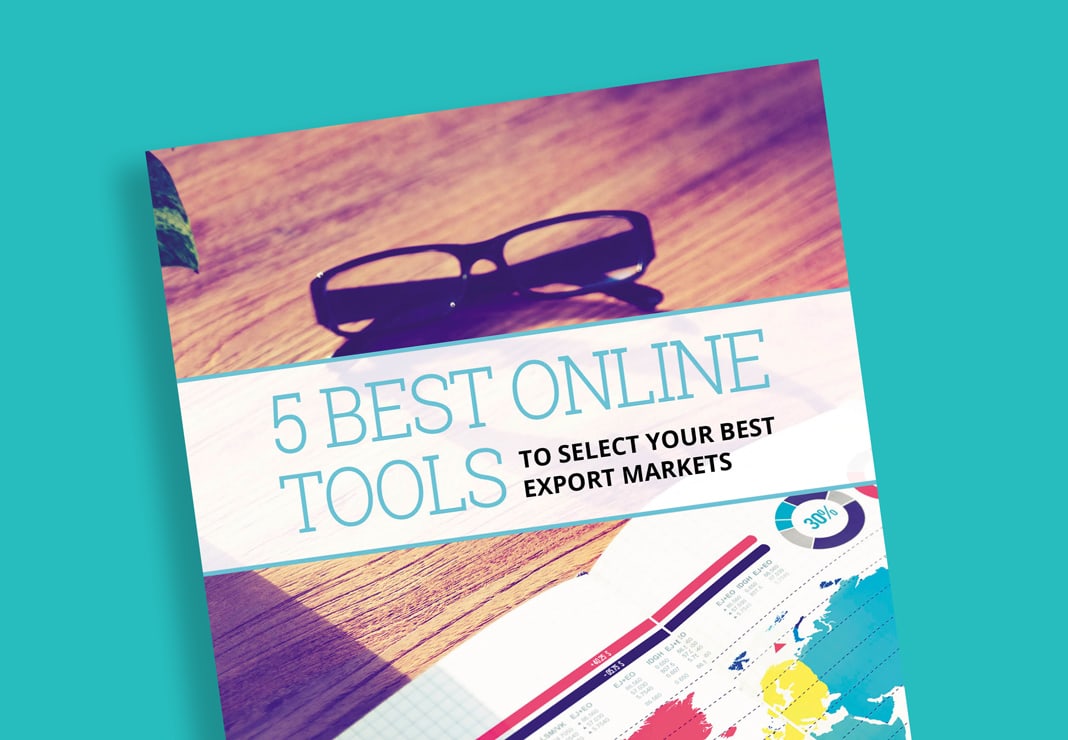Companies are starting their exports and global reach earlier than ever before and this is great news for founders, for consumers and for investors. Digital technology drives more opportunities for startups and makes it faster, easier, and cheaper to gain access to markets in some of the world’s most unexpected previously diverse countries. Not surprisingly, nowadays consumers in Germany, in South Korea, in Brazil, in Nigeria, in Montenegro and in the USA, have access to certain types of products or services at the same time.
For some entrepreneurs, going global is a choice but for others going international from the start is the only way to survive. These companies are the so-called born-global startups and they have a very different approach towards international markets. For them, these markets are not an opportunity but a must. That is why, when starting a business, choosing the right internationalization mode, and timing is associated with your reliance on accessing the full potential of your international markets. Are you that type of company? Does your company’s existence depend on your presence on international markets? If that is the case, this editorial is for you.
In this article we will scrutinize the concept of born-global startups, and how this type of companies can be characterized. Furthermore, we will describe what is the best international strategy for their business model and implications on their international growth. We’ll also highlight the importance of adapting the international expansion strategy and entry mode choice to suit your company type.
What is a born-global startup?
A startup is a business at its initial stage of activity. They are usually founded by one or several entrepreneurs who originally invest their own or family funds in the creation of the company. Startup creations are driven by entrepreneurs’ aspiration to develop a “star“ product or a service which they believe solves a valid problem and has a high demand on the market. The difference between a startup and a born-global startup lies in their internationalization patterns. A born-global will grow simultaneously on the local and international markets and the most successful companies can grow presence in ten to twenty countries a year. Contrary to what it is assumed, these types of companies are present both in BtoC (business to consumers) and BtoB (Business to Business) segments. Some of the very successful born-global startups are Spotify, Zoom, Meero, Deezer etc.

The main features of Born-Global startups:
Focus on one product
Born-globals generally focus initially only on one product, a technology, or a service. This signifies that before launching the company, the entrepreneurs have investigated in-depth the market and have identified which is the best product to start with. This allows them to dedicate their resources to this product and capitalize their limited funds on the best opportunity offered. That is why when we think of successful born-global startups, we can identify them by one product. For example, when we hear the name of such a globally successful American startup as Stripe, we know we speak of payment software for businesses. Another example is the French startup Meero, which is associated with their on-demand photography platform for professionals.
Well-defined differentiation strategy
When the focus product has been identified, born-globals will work extensively to design a globally sustainable competitive advantage. By doing so, they prepare to face the competition worldwide. Therefore, they will build a common answer for the maximum of competition based in different countries. This requires extensive international market research. Another particularity is that Born-global firms tend to avoid competition they cannot afford to face at the beginning. They adopt differentiation strategies by developing differentiated designs, addressing a specific type of customers and unique products that target niche markets, which often are too small and overlooked by larger firms. For that reason, there is a need to be present in several countries to have an attractive market size and potential. Sometimes, born-global startups create a new product and a market which did not exist before, however in most cases the products are designed for an existing problem in many countries simultaneously.
Definition of the market or Internationalization patterns
We can recognise born-global startups by their high activity in international markets from the origin. The difference between a startup and a born-global startup lies in the understanding of the market and the speed to reach this market. For a born-global the market is the world, and their aspiration is to reach the maximum number of customers globally in a very short time. A company such as Meero, which was created in 2016 and is currently present in more than 100 countries, is a good example of the internationalization pattern which can define a company as a born-global startup. We have seen a similar pattern for Deezer and Spotify.
Ecosystem integration
For many born-global startups the key success factor is their integration with the professional network. They are part of ecosystems that stimulate their development, and which link up users, customers, universities, companies, and institutions that help them grow. To continue with Meero’s example, the company has been integrated from its inception in the community of photographers which allowed it to build a community of 58 000 professional photographers and videographers.
Technology driven mostly
The emergence of born-globals has been mostly driven by technological advancement, by increasing global internet penetration rates, connected technologies, by e commerce etc. Nevertheless, while most investors are mainly interested in tech-driven startups and undeniably many born-global firms are companies with technology-based products, born-global firms can succeed in industries such as furniture, food, and consumer products. Still recurringly for all these companies, we will observe their application on one key product to drive their growth.
Strong international resource base
The founders of successful born-globals have several things in common: strong international outlook, background, and orientation. Since they engage in coordinating many activities across numerous countries, born global startups benefit significantly from having access to worldwide resources from their establishment. The resources that we mention here are the founders themselves with expertise in different countries and in the industry, the access to global financial resources such as access to capital or financing, the human resources with a team of international profiles from diverse countries etc.
The international strategies for born-global startups
The conventional way to internationalize is when companies start internationalizing only at a more mature stage. The main drivers for their interest towards new countries are the saturation of the local markets, increased competition, and maturity in their market and industry understanding. By applying the conventional path, companies start from no international sales or activity at all, to start exporting via agents, then by creating subsidiaries, and finally reach the highest commitment level in setting production and manufacturing in other countries. Another particularity is that companies under this model usually start from the countries that are geographically and culturally closer.
Born-global startups must apply a different process and they need to be be fast. They do not have the time and the choice for a step-by-step approach. The reasons behind this statement are: 1) short lifecycle of the products which sometimes is less than five years, 2) high propensity of being copied or replaced by a foreign competitor, 3) high pressure from founders, investors, and venture-capital for return on investment 4) need to create global brand value 5) need to have the first-mover advantage on maximum of markets. 6) niche positioning and need for a critical mass tp stay viable.
Lean internationalisation
In this article, we are introducing the lean internationalization path, which we strongly believe is the one which is more adapted for born-global startups since it is in line with their characteristics. As a reminder, the lean startup method considers experimentation to be more adapted for startups than detailed planning. Instead of business plans, startups use a business model based on hypotheses that are tested rapidly. And entrepreneurs test their hypotheses by engaging with potential customers or stakeholders. Similarly to the lean startup method, lean internationalization model proposes a faster way to reach global growth by applying an internationalization model based on hypotheses that are tested rapidly.
Under this method, the proposed steps to successful international growths are:
Leverage the existing network
For the first steps to grow global, born-global startups leverage the existing network of the founders, management team, investors etc. As we have seen in the previous paragraph, the born-globals have a diverse team of founders, investors, and decision makers. By applying the lean internationalization method, the company is expected to start in a quite unstructured process. The existing network are put to work to grab “low hanging fruits“ and to generate “quick wins“ in the sense of success story projects or lead “international“ users.
Testing phase – establish a benchmark for minimum time-to-market and ROI
The second step of global growth should be focused on global value chain activities with lower market entry barriers. The born-globals analyze each country they could access through leveraging the existing network and decide where the time-to-market will be lower and the return on investment will be higher.
Integration in global solutions or distribution networks
If we take the example of companies which develop high quality cloud-based applications as a plug-in of a globally used system, we can see that they internationalize earlier and faster than developers of stand-alone software products. Thus born-global startups can speed their go-to-market by integrating global networks or signing global partnerships.
Build an internationalization playbook
Fourth step is outlining an internationalization playbook. Based on the accumulated knowledge, born-globals design and implement structured internationalization processes. All these steps happen quite fast, and a born-global startup will gain from having a reproducible internationalization pattern soon after incorporation.
Choose entry modes adapted for first mover niche market strategy
And the last step is regarding entry modes. Born-global startups apply first mover niche market strategy and the entry-modes applicable for them require less resource-intensive market entry modes such as export, e-commerce, licensing, and franchising since they allow for a faster global market penetration and the simultaneous entry in several markets.
Reasons of failure to implement
Born-global startups face significant delays in the execution of their international market development activities in comparison to the time estimated. The main reason is often unstructured and unplanned internationalization behavior. Born-globals often enter new markets based on their networks, use market opportunities, or follow existing clients without analyzing the attractiveness of foreign markets. This performance reduces the speed of internationalization. We would like to acknowledge the importance of a structured market development process starting from a detailed evaluation and selection of foreign markets before they enter them, which is consistent with lean internationalization.
Lean internationalization is not a synonym of unstructured and opportunistic
Many companies confuse the word lean, with unstructured and unprepared. Risks are very high as most new companies or products simply do not make it, so the risk of losing the entire investment is a real possibility. As outlined above, the lean internationalization provides tools to mitigate these risks. As many critics say, the lean startup involves sometimes too much testing and not enough preparation. We wish to acknowledge the importance of an international strategy and a well-structured market development process before going abroad which goes hand-in-hand with lean methods. Firstly, understand and leverage your international network, next step test and establish a benchmark, if possible integrate global players to gain momentum, design your lean internationalization playbook and lastly adapt entry modes to needed speed.
Prime Target can accompany you in your international business project, and assist you in market potential evaluation. Prime Target’s Market Ranking Report can help you evaluate the market potential of 5, 10 or 20 countries simultaneously, and identify new export markets with the highest potential. This comprehensive and personalized Market Ranking Report can minimize risk, saving time and money, as well as identify new business opportunities abroad.




